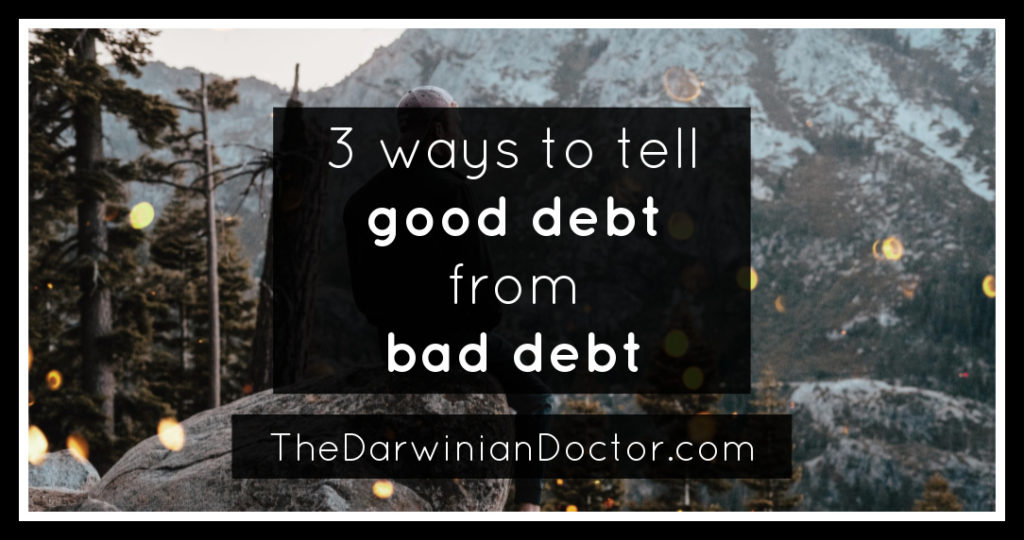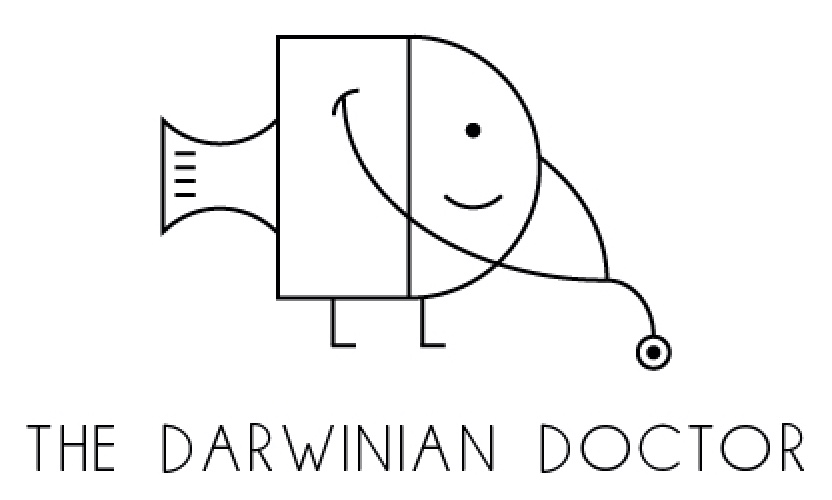Today’s post reviews three ways to tell the difference between good debt and bad debt: interest rate, payments, and purpose.

Debt is a really hot topic in the world of personal finance.
On one one end of the spectrum you’ve got the disciples of Dave Ramsey. They recommend paying off all your debt (even your house) as part of his famous “Baby Steps.”
On the other end are real estate investors, who usually have a remarkably high tolerance for debt. These zealots see it as a triumph to have a deal 100% financed with OPM (other people’s money).
In full transparency, I’m pretty close to the real estate zealot end of the spectrum. But I’m new enough to real estate investing that I still have a healthy dose of discomfort mixed in with the feeling of triumph whenever I sign mortgage documents.
So how are you supposed to know the difference between good debt and bad debt?
What makes debt good or bad?
You’ll find a hundred different answers to this question, but here’s my take.
Good debt
- Generally low interest rates
- Payments are not a tremendous financial burden
- Brings you closer to your financial or personal goals
Bad debt
- Generally higher interest rates
- Payments affect your day to day life
- Does not bring you closer to your financial or personal goals
Interest rates
I believe “good debt” should have relatively low interest rates.
The concept of “low” versus “high” interest rate debt is of course relative. In my mind, the boundary between low and high sits around 5-6%. At this level, the debt compounds fairly slowly. Also, you have a fair chance of beating this negative drag on your wealth by investing your capital to generate a superior return.
Let’s discuss an example. Let’s say you take out a 4% loan to purchase an investment property that costs $300,000. With a 25% down mortgage, you’re taking on $225,000 of debt. But with a good deal in a market with high rent to value ratios, you could feasibly hope to still yield an 8-10% return after accounting for all your costs.
By taking on the debt in the scenario above, you’re likely to come out ahead in the long run. But the higher the interest rate on the debt, the harder it becomes to reasonably expect this outcome.
Payments
Good debt should come with payments that are not a tremendous financial burden.
Let’s use my investment portfolio as an example. I currently have six mortgages for my investment properties. In total, the monthly payment for all of these is about $4400.
While this is a big number, the stabilized properties alone are cash flowing nicely and are generating a positive cash flow of almost $30,000 a year. I anticipate this cash flow will grow to $60,000 annually as the 10 unit apartment building comes on line.
The chance of all my properties going vacant all at once is low. But if this were to happen, I can rest easy that I have enough reserves and cash flow from my day job to keep my finances and lifestyle intact.
For now, I find it comforting to know that I can cover all the debt payments via my regular income alone. If something catastrophically interferes with the income from my investments (*cough* pandemic *cough*), I won’t be forced to make painful financial decisions just to stay afloat. At some point, my real estate portfolio will be diversified and robust enough where I’ll feel comfortable with it completely supporting its own debt. But I’m not there yet.
What if you don’t own real estate? Well, I’m sure you’ve also considered the effect debt payments will have on your life.
During the asset accumulation phase of your financial career, it can make sense to take on low interest debt when there’s a good expectation of a return from taking on the debt. This is what most physicians do, for example, when they go to medical school using student loans. Those loans unlock a doctor salary later on.
But even high earners can face the situation where the payments on their debt is so significant that it makes it tough to make forward financial progress. Consider the scenario of the high earning professional with the expensive house, luxury cars, and fancy clothes, who’s also drowning in credit card debt.
Distance to your financial or personal goals
The final factor to consider before taking on debt is the purpose of the debt. I believe good debt should bring you closer to your financial or personal goals.
Taking out a low interest mortgage to purchase a good investment property? This brings me closer to my goal of attaining moFIRE within 10 years. I’ll take that debt all day long.
Taking out a low interest debt to purchase a Tesla Model 3? Well… it’s complicated. The mental gymnastics to justify this as a good purchase are rigorous. So it’s probably not good debt if we consider it just through the lens of my financial goals.
But how about my goals of having less stress and fatigue, and more time with my family? Yes, yes, and yes. The car ticks the boxes.
The mental exercise of considering debt via this lens makes it more likely for you to make educated decisions about your debt.
Conclusion
Today we reviewed three ways to tell good debt from bad debt. Every debt is different, and there are a million shades of grey.
But if you consider the interest rate, the payments, and the purpose of the debt, you’ll be well on your way to knowing the true nature of the debt.
–TDD
How do you decide if a debt is “good” or “bad”? Comment below and please subscribe to my weekly newsletter so you don’t miss a post!
Perhaps you’re more of a Facebook type?
Are you a physician, spouse, or professional and you’re interested in using Real Estate to gain financial freedom? Join us in our Facebook group and accelerate your journey!


Want to support the blog?
- Join our investor club at Cereus Real Estate
- Visit my Recommendations page
- Check out my wife’s food blog: Eat Dessert First
- Stay at our luxury short term rentals
- Check out my TikTok channel
- Follow me on Instagram
- Follow me on YouTube
- Contact me with questions

